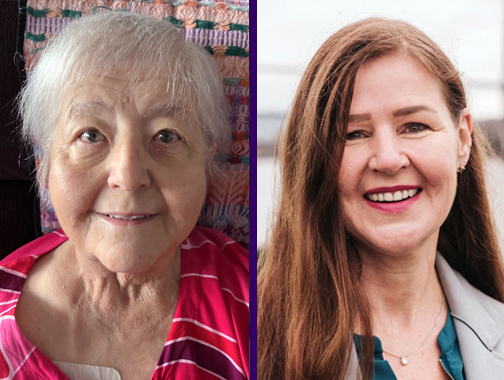
Pat Bailey and Sherri Kensall
If there is a year in recent memory that tested British Columbians, it is 2021. The disastrous extreme heat and destructive wildfires in early summer were a preview of cataclysmic late-autumn rain and windstorms that pummeled BC.
By November 14, torrential rain and winds caused serious damage across the Lower Mainland. The Trans-Canada Highway, the province’s main transportation artery, was in ruin, with large stretches under water and bridges washed out.
As with the summer heat and wildfires, two essential points were clear as November’s rains fell hard: the importance of being prepared when disaster strikes, and the fact people are both our most fragile challenge and our most robust resource when it comes to a widespread emergency.
Pat Bailey is a Fraser Valley resident living with kidney disease. A senior citizen, Pat has been receiving life-sustaining hemodialysis treatment at an Abbotsford facility since June 2021. She recalls what happened when the storms interrupted her dialysis access: “I was contacted by phone and asked if I would be willing to go to my treatments by helicopter. They also informed me to prepare that I might have to stay overnight one night, so I did.”
Little did Pat know that an overnight hotel stay would stretch into over two weeks away from home, where her husband Bill and an ailing but much-loved dog anxiously awaited her return.
Also unsure of exactly how events would unfold was Sherri Kensall, a renal clinical nurse specialist with Fraser Health. Sherri assisted Pat and other kidney dialysis patients during this unimaginable time. An article Sherri wrote for a Canadian nursing organization captures the urgency of situation: “On November 17th, I was asked to fly into our community to support 50 patients who were stranded without access to dialysis – for up to five days in some cases. When I got into the helicopter, I was not certain if I was heading to the community to set up a dialysis unit or to transport patients, yet I felt prepared for either scenario.”
Sherri says, “Once there, we decided the best approach was to fly patients where they could access dialysis. As soon as I landed, I began to triage our dialysis patients. This involved complex decisions about who would require dialysis first, who might be able to wait and who required emergency care immediately. This was guided by the information compiled by our teams and my own clinical judgement. I also needed to assess patients’ level of frailty and ability to ride in a helicopter.”
She continues: “Once patients were safely transported with access to dialysis, we began the process of supporting patients while away from home.”
For Pat, Sherri’s personal interest in her wellbeing was much appreciated. “I was the last person transported to the hotel. Sherri took the time to help me get there and because I am in a wheelchair, she kindly assisted me into my room and helped me get settled.”
The crucial care and attention Pat received was repeated continuously by Sherri and her peers during this trying time. Sherri says, “I worked closely with our ‘renal dream team’ during the two-week period when we supported our patients away from home, either with family and friends or in a hotel. This was an interdisciplinary team of nurses, managers, dietitians, social workers as well as others.”
Sherri recalls, “During this time, there were many innovations in our approach to care and my role was to ensure that these were provided in a safe and effective manner.”
“We have documented our experience and shared it with our teams. We are using this to inform future versions of our provincial disaster plan. As a clinical nurse specialist, I am participating on the provincial team for emergency planning by reviewing current resources and compiling suggestions for future considerations based on this experience.” For fellow dialysis patients who may face an event similar to the one she experienced, Pat offers three key points:
- Try not to panic, so you can think more clearly and plan your solution to the event.
- Prepare at least for four days of clothes and one week of medication.
- Trust the caregivers. Cooperate and remember you are not going through this alone and they have more than just you to care for.
Don’t be caught off-guard: BC Renal has emergency resources for patients and health professionals to build a plan that addresses care needs in the case of an emergency or serious unplanned event.

